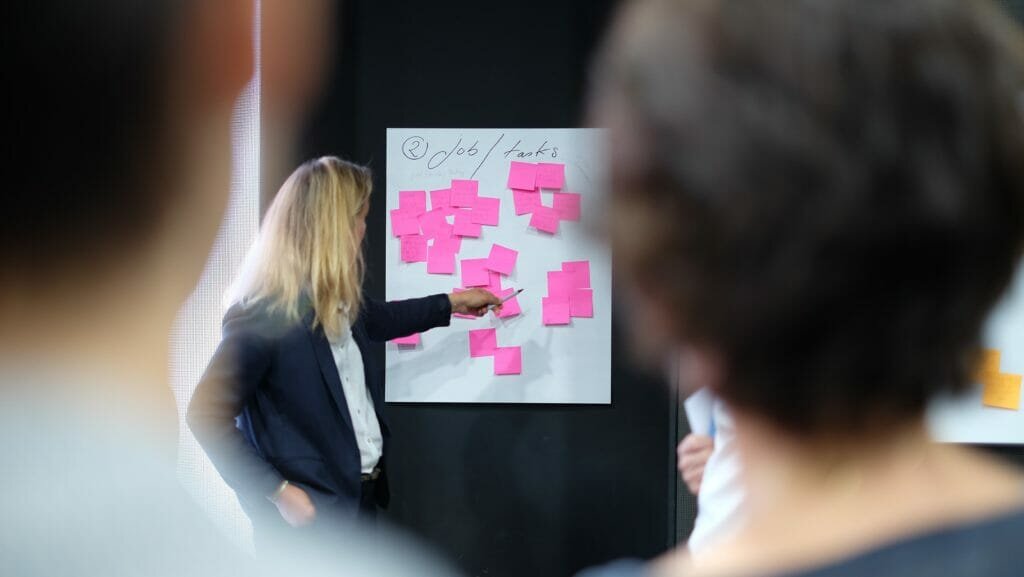This year doesn’t just mark the start of a new decade, but also the 10th anniversary of the first ever #ProductTank (and my 20th as a Product Manager). What started as a simple meetup in London has evolved into the world’s largest product community, with chapters in over 200 cities around the world and 200,000 passionate peers who get together regularly to improve our craft.
So as good product people, it’s high time we did a retrospective on how we as a craft have done in this 10-year sprint marathon.
What’s worked well?
Defining the craft (almost)
While there’s still no one size fits all definition for product management beyond broader definitions like Marty Cagan’s job description and my venn diagram, it’s certainly a better understood and far more in-demand role today than it was 10 years ago. Today product management is generally accepted as a critical part of any organisation and reports to a product leader (not marketing or engineering) who is seen as a peer to all the other functions of the business.
Putting users in focus
This organisational shift is critical because it has freed us up to truly focus on the product and on the customer problem. 10+ years ago, companies were struggling to understand their customers’ needs and Product were often seen as requirements gatherers – or even worse, weren't even allowed to speak to customers. Our friends in UX have led the way to a much more customer-focused approach. Together we have been able to get out of the building a lot more, talk to actual customers (what a concept!), and bring that insight back to the team.
Embracing cross-functional teams
We have fully embraced that building great products is a team sport. The only way to build products people love is by sharing responsibility with UX, design, engineering, research, and so much more. None of us “own” the customer, the product, or the code—we can only succeed as a team—and that goes across the business, not just in our tech bubble.
Moving towards outcomes
For the first part of my career, product managers were judged by the quality of our product requirement documentation and then we spent too many years focused on outputs (whether in lines of code or story points). In this decade we’ve finally managed to change the conversation to outcomes, and measure the impact of our product work on the outcomes for the customer and business.
Discover more on outcomes over outputs.
Making bets
Between Agile and Lean Startup we have fully embraced the cost of wasting time building the wrong thing. We spent a few years focused on failing fast (because it sounded catchy) before finally realising that it’s all about learning fast. Whether it’s user research or experiments, this hypothesis-driven approach has reduced feedback loops and waste dramatically. It also gives us more permission to be wrong by placing bets and hypotheses on the line, not our careers.
What could have gone better?
Systems thinking
This past decade marks some of the biggest scandals in tech, from Facebook’s widely reported role in shifting elections to massive data breaches, and lethal software development at Boeing. These are just the headlines that underpin a larger trend in product management and software development. It has become so easy to over-optimise on the details and the short term that we forget to consider the wider impact on the system as a whole.
The time spent debating semantics
What is a product manager? What is a product owner? Is a product manager the CEO of the product? While we haven’t gotten quite as navel-gazing as some crafts (I’m looking at you design Twitter), we still spend too much precious time debating the semantics of any given term. We try to convince each other of our own unique interpretation of the English language when we could just be working on the product, or helping the rest of the organisation see the value in product thinking. As my friend Saielle reminded me – semantics and jargon are part of a bigger problem – they are symptoms of a lack of inclusive thinking, a focus on territory building rather than sharing, and on paying more attention to our echo chamber than our customers.
Copy/Paste culture
Far too many organisations spend far too much time trying to copy/paste processes, tools, or ways of working from other teams. The infamous Spotify model is probably the best example of this—an aspirational organisation design that Spotify themselves never fully implemented has become the de facto standard by which all other teams are organised. Where’s the critical thinking on what will actually work best for you, your team, and your organisation?
Self-care
Whether it’s our imposter syndrome or simply the weight of all that responsibility on our shoulders, product people seem to embrace the crazy busy trope more than most, and it’s hurting our health. Our value isn’t defined by the number of hours we spend in the office (or on Zoom calls) but the outcomes we deliver as a team. That requires a focus on mental health and time out of the office, whether it’s to speak to customers or just time to think. Good product management is good time management. Thinking just as much about what you say no to as you do for your product.
What should we do differently?
Show our work
As cyberpunk author William Gibson said, “The future is already here – it's just not evenly distributed”. While we’ve made great strides on the product craft and mindset over the last decade, not every team and organisation has fully adopted and embraced it yet. There remains a lot of work to do to show and share the value of better product practices so that we can continue to transform organisations, their teams, and their product practices. Over the next decade, I’d love to see more emphasis on sharing what works for you and your teams. Additionally, I'd like to see more critical thinking applied to those lessons by others in the realisation that they’re inspiration, not fact.
Embrace learning
As the Agile manifesto says, “We embrace change over following a plan”, and zooming out and looking at the decade view shows just how much has changed in our craft and our industry. That’s before we’ve even seen the full societal, personal, and business upheavals of the COVID-19 pandemic. We need to continue to embrace change, celebrate it, and leverage it to improve ourselves and our businesses. Beyond the basics, there is now—more than ever—no right way to do product. You can’t copy/paste someone else’s process onto yours if you expect to succeed. But we can all learn from each other, as long as we apply critical thinking to understand what parts of those learnings would add value to our own teams, and systems thinking to understand the overall impact of change.
Focus on the whole
It’s easy to get stuck in the weeds of the details of product. What tool should we use? What colour should this button be? How do we improve conversion at this point in the funnel? In order for product thinking to be successful, we have to consider the whole as well. Applying systems thinking to understand the full impact and implications of a small change will be an ever more important part of our role. Switching to outcomes was a great start, but now we have to start focusing on the impact of those outcomes – on our customers but also the wider world around them. This includes spending time considering all the possible unintended consequences – or as Emily Tate says, ask yourself, what would a troll do?
Think strategically
Product strategy and business strategy are becoming increasingly intertwined, especially in product businesses, and even more especially in startups. This is an opportunity for us to step up and prove the value of product thinking on the wider business. We can do this by looking at the bigger picture, building a shared understanding of the problem we’re trying to solve, creating alignment around our goals, and ruthlessly prioritising our options for getting there.
Focus on value
If you’re lucky enough to be in an organisation that is at the forefront of product thinking, and that has embraced the fully empowered cross-functional teams that underpin them, it’s important to step back and realise our role as product managers have evolved with that. While the whole team is collectively responsible for the product, if you have strong design and engineering partners in your team it’s time for product managers to more fully embrace our unique role in the team – focusing on value.
Getting stuck into the UX or the cool tech is always going to be more fun but that’s not really our job. The bottom line is that our job is to make sure that the team is delivering the most value to our customers, and by doing that we deliver the most value to our business too.
We’ve still got work to do
So there you have it – a retrospective on the last decade in product. While a lot has changed for the better we still have a lot of work to do to continue proving the value of product thinking, embracing systems thinking and ethical product development, and helping each other build products (and services) people love.
Discover more content on Product Management.
Thanks to Saielle DaSilva, Emily Tate, and Imogen Johnson for editing. And thanks to the many amazing responses to my virtual retro on Twitter – even if we didn’t have enough post-it notes – Büşra Coşkuner, Colin Grossman, Dave Thompson, James Gulland, Jason Scherschligt, JP Park, Kintan Brahmbhatt, KP Frahm, Kyle Evans, Lily Smith, Pär Österlund, Radhika Dutt, Seb Sabouné, Steve McLaughlin, and more!









